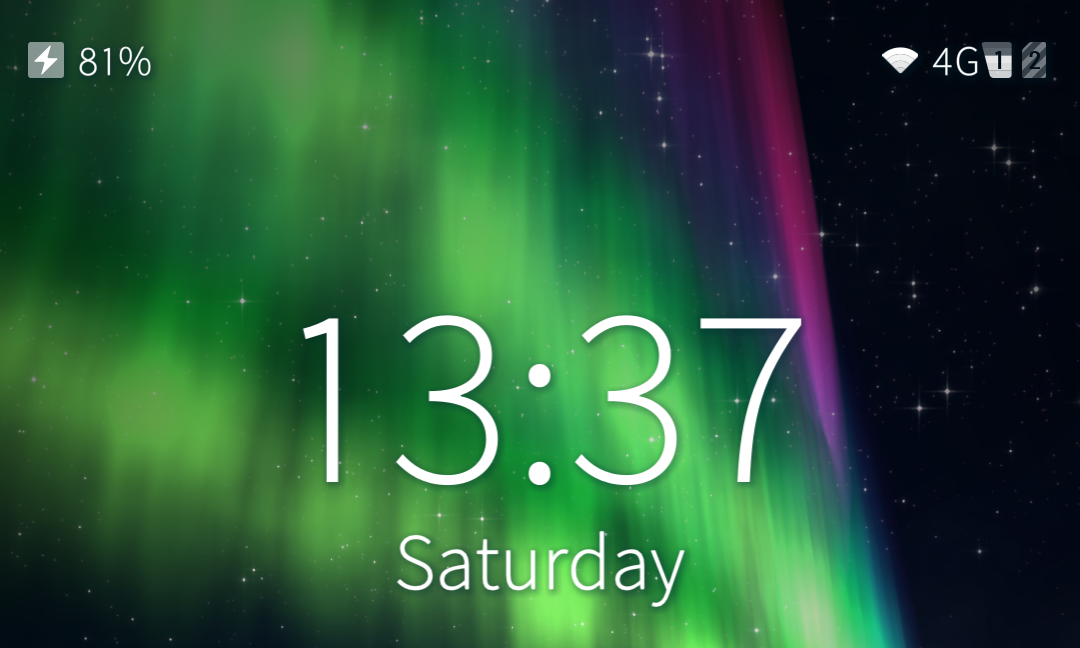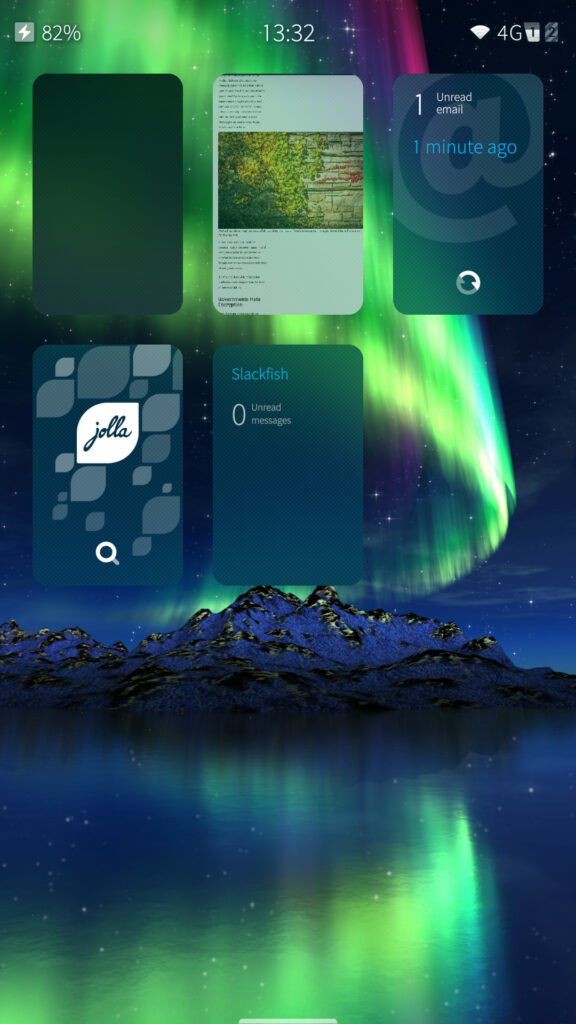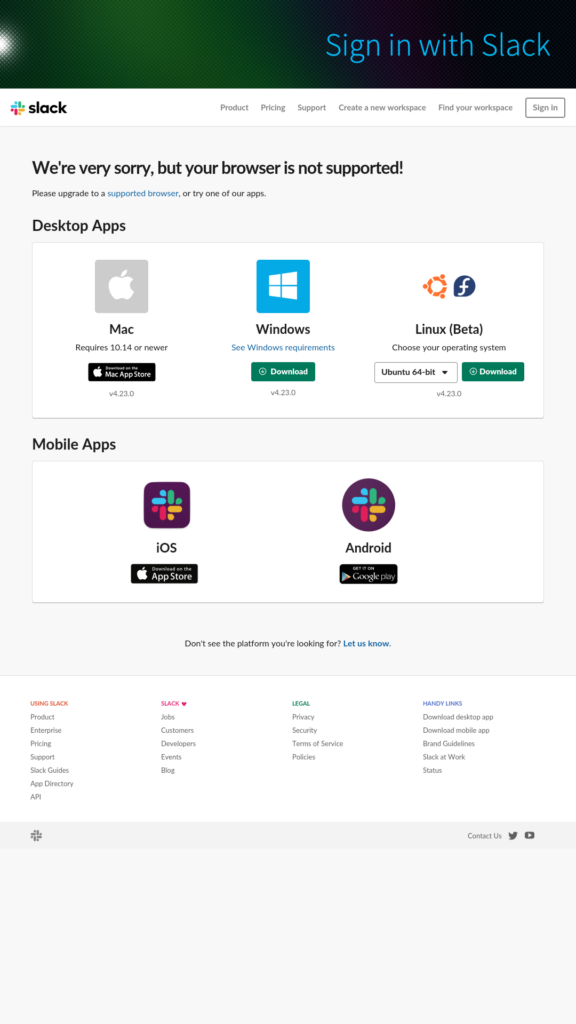How to Escape The ‘Smartphone Duopoly’ of Apple & Google with Sailfish OS

There’s a shocking lack of diversity in the smartphone market. Either you’re boasting an iPhone in your pocket or you’re carrying around an Android. But Google spies on your stuff, and Apple’s record on defending the privacy of their users is patchy at best.
Both the Windows Phone and Windows Mobile OS are long dead after an extended period of mockery. The once-loved Blackberry shut down its servers earlier this year, rendering handsets from what was formerly the most popular business choice finally obsolete.
You may think you have no choice but to submit to the duopoly. You’re wrong. It’s totally possible to live a rich, productive life with neither Apple nor Google as the hub of your communications. All you need is a little know-how, a few hours, and ironclad discipline.
Over the next few weeks, I’ll be exploring alternative, privacy-conscious mobile operating systems to see how well they stack up against the competition. What are the trade-offs out there? Are they easy to use? Are they actually worth your investment in time and money?
First up, Sailfish OS.
What Is Sailfish OS?
If you’ve heard of Sailfish before, you’re likely aware that it’s free and open-source software (FOSS). This means that the source code is open to the public. You can modify it, contribute to the project, and use it however you like. You can even fork the project to create a variant and sell your own version.
In the case of Sailfish OS, the FOSS label is only partially accurate. The operating system is open source, but the user interface is proprietary (closed source and privately owned) — as is the predictive text functionality of the keyboard and the ability to install and run Android apps. While it’s quite possible for users to avoid Android apps altogether, most would have a hard time creating their own interface so they can operate the device.
Because of its proprietary elements, Sailfish OS comes with a price tag of $57 (€49.90). The trial version does have a user interface, but without the aforementioned predictive text or Android app support.
I haven’t paid for an operating system since the heady days of Windows Mobile in the early 2000s, but what price is too high to put on privacy? The cost of a smartphone plus $57 for a privacy-respecting operating system seems quite reasonable if you want to secure your personal communications, and it helps keep you from the clutches of both Apple and Google.
The History of Sailfish OS
Remember Nokia? Once, this Finnish phone company was a hive of innovation, creating resilient mobile devices and lightweight mobile operating systems to go with them. Nokia’s last-gasp effort was MeeGo OS, which was abandoned following a team-up with Microsoft.
Nokia’s former software engineers and designers picked up the mangled MeeGo corpse and reformed it as “Jolla”. In 2013, they released Sailfish OS — a privacy-conscious, full-featured mobile OS to run on the Jolla phone.
The Jolla phone is no longer produced; instead, Sailfish OS is now optimized to run on the Gemini PDA and select models of Sony’s Xperia — these are the XA2, XA2 Ultra, 10 series, and X series. None of these models are especially up-to-date, but they’re all part of Sony’s Open Devices program. Sony fully expects users to tinker with them, install new operating systems, and experiment with functionality. So, I opted for the fabulously chunky XA2 Ultra.
Getting Started with Sailfish
The Sony handset arrived with a stock Xperia ROM, and it came bundled with bloatware from Facebook, AVG antivirus, Netflix, and a bunch of shopping apps. These can be disabled, but not removed.
Before downloading or purchasing Sailfish OS, you’ll need to create an account with Jolla. This involves giving your email address and date of birth, generating a username and password, and, of course, agreeing to the terms of service and privacy policy.
There’s nothing especially concerning in either of these documents. Your data is kept on servers in the EU, and it will only be disclosed to third parties under the following circumstances:
- You’ve given Jolla express permission to share your information.
- It’s necessary to share your information to provide a product or service you’ve requested.
- Sharing your information is required under the terms of service.
- Sharing your information is necessary for the purposes of fraud, security breaches, or criminal behavior, and/or the law permits Jolla to disclose your information.
It’s not perfect, and I would prefer if Jolla didn’t keep any data at all, but it’s considerably less information than you entrust to a company such as Google or Apple.
You then need to connect your phone to a computer in order to install Sailfish — Jolla provides installation instructions for deploying Sailfish OS on each supported device using Windows, Mac, and Linux.
Instructions are easy to follow, so you shouldn’t have a problem getting Sailfish up and running in under an hour.
One important caveat is that if you’re running an Ubuntu Linux system with USB 3 ports (as I am), you will have problems, such as adb not detecting the device when in fastboot mode. None of the solutions from the support forums worked for me, and after almost an entire day of cursing my phone, my computer, and the world in general, I gave in, and used my daughter’s Windows 10 machine to get the job done.
Installation from Windows took around 20 minutes and went without a hitch.
Using the Sailfish Interface
The first thing you notice when you boot your Sailfish OS device for the first time is how incredibly polished it is. The theming is just perfect, with colors, icons, and highlights matching the background.
With Sailfish OS, you don’t set your wallpaper; you set an ‘Ambience’ — a theme where each aspect of the interface is colored, highlighted, and adjusted based on the picture you choose as a background. You can access this from the ‘Settings’ menu, and it’s very intuitive to use — simply pick an image from a list and the look and feel of your device will be transformed. There are dozens of Ambiences to choose from, or you can create your own.

As you can see in the screenshot, I chose a photo of one of my dogs on a cold January day, and the rest of the Ambience was changed to match. If you don’t think that Sailfish managed to get the colors quite right, you can set them manually using the color picker.
Navigation is gesture based, which means that in most cases, you won’t see any buttons at all. To navigate Sailfish OS:
- Swipe from the bottom to access the app drawer.
- Swipe from the right to return to the home screen.
- Swipe from the left to go back to the previous page or menu.
- Swipe from the top to access menus such as ‘Settings’.
System notifications (on the right in the screenshot above) are accessed by swiping left from the home screen.
It takes a few minutes to get used to, but thanks to the initial onboarding, it feels natural after a short amount of time. There’s a guide allowing you to practice using features shortly after you launch Sailfish, so you’re not on your own wondering what to do next.
Screen transitions are very smooth, and the interface feels polished — as you might expect from a $57 OS.
Apart from the status bar, which shows details such as time, battery level, and signal strength, the home screen is blank. There are no widgets or icons.
As you open apps, Sailfish OS will populate the screen with thumbnails, allowing you to switch rapidly between them. It’s not a home screen as you know it — rather a front-and-center task switcher.

Living with Sailfish OS
Sailfish OS is not widely used, and the most popular apps have around 50,000 downloads. Compare this to the Android operating system with its 3 billion users, and it’s easy to see why commercial developers are not incentivized to produce apps for the Sailfish OS platform. Believe it or not, that’s a good thing — a very good thing. Especially when it comes to tracking.
A huge proportion of the popular apps on other platforms make their money through user surveillance. TikTok — the most popular app of 2021 — tracks you even if you never made an account. Until it was discovered and forced to stop, it was routinely “copying and pasting your clipboard with every keystroke”. I don’t think we need to go into detail about surveillance from Facebook or from Google itself. And there are even smaller, third-party apps doing it, too.
The small Sailfish OS user base doesn’t make an attractive target for surveillance-led monetization. The open-source nature of the apps means that any surreptitious tracking would be spotted quickly.
Sailfish has the usual selection of platform games, office and productivity tools, and navigation solutions, as well as ways of interacting with other open-source services.
Nextcloud integration is embedded in the operating system, meaning that any system changes can immediately be backed up to your own cloud — and quickly restored. Automatic Nextcloud photo backup is handled by the GhostCloud, with modules from GhostCloud additionals.
I was able to interact with the Fediverse — an alternative, decentralized social-media ecosystem — through the Tooter app, and I found the experience to be both better and more beautiful than with the equivalent apps on Android.

My attempts to access the PIA Slack channel using the Sailfish OS Slackfish app — designed specifically to link with Slack — failed. This wasn’t due to any fault with the app itself, but rather because Slack only allows access through a desktop web browser or one of its own mobile apps.

Slack, as has been reported by numerous outlets, is a “tool of corporate surveillance”. It’s not surprising, then, that they’d want to keep as tight a hold on your workplace convos as possible. Although Slackfish might’ve worked at one stage, I can say it’s not the case any longer.
The secure messaging app Telegram works, thanks to an app named “Fernschreiber”. However, it must be constantly open in the background in order to create notifications.
Android Apps on Sailfish
Provided you’ve paid the fee, then during installation you’ll be asked whether you want to use F-Droid or Aptoide as your Android app source. They’re both good options with a similar range of open-source apps.
For me, the essential app was Delta Chat — an email based, end-to-end instant messaging app. I installed it using F-Droid, and it worked almost perfectly. However, as with Fernschreiber, the app needed to be left open in order to receive notifications — not ideal.
Many of the other Android apps I installed worked better than their Sailfish counterparts. The built-in web browser, for example, is clunky and has visual artifacts on items such as progress bars. It doesn’t support launching in private mode or allow launching websites as standalone apps. Fennec — an offshoot of Firefox available through F-Droid — allows you to do both, and it works without any issues.
RSS readers such as Kaktus were not compatible with FreshRSS, so I ended up installing the Fluent Reader Lite Android app instead.
As my time with Sailfish progressed, I found that I was searching F-Droid and GitHub for Android apps before I even checked out the Sailfish OS native offerings.
One important thing to note is that even with the Sailfish OS Android integrations, you won’t be able to use apps that rely on Google Play services. This isn’t surprising, as Sailfish OS exists to help you escape from under Google’s thumb, so it would be counterproductive to allow Google services to run in the background.
Is Sailfish OS Worth It?
During my time with Sailfish OS, I was left with the feeling of missed potential, mostly because of the excellent Android app integration. After all, if you can run an Android app perfectly well on your Sailfish OS smartphone, why would you need to develop a native one?
One example of just that is Delta Chat. A 2018 discussion on the Jolla forums downplayed the need for a native Sailfish version of the app because, “The Android version from F-Droid works flawlessly with Jolla.”
Having more native apps on Sailfish OS is a nice idea, but aside from the superior aesthetic offered to Sailfish apps through ‘Ambience’, there doesn’t really seem to be much point.
The problem with this reliance on Android apps is that Jolla will need to maintain pace with Android development to keep app compatibility up-to-date and functional. This is time and money that could be better spent making their own apps better.
All-in-all, though, I like Sailfish. It offers a partial escape from the seemingly unassailable grip that Apple and Google have on the smartphone ecosystem, and the interface looks great. Leaning on Android apps for support is not a good look, but hopefully as the popularity of Sailfish OS grows, native app development will once again become a priority.
The OS has been around for almost a decade now, and it’s already in its 4th generation, with more and more functionalities available at every launch. If you have a spare $57, plus the price of a second-hand smartphone, I recommend giving Sailfish a try.
